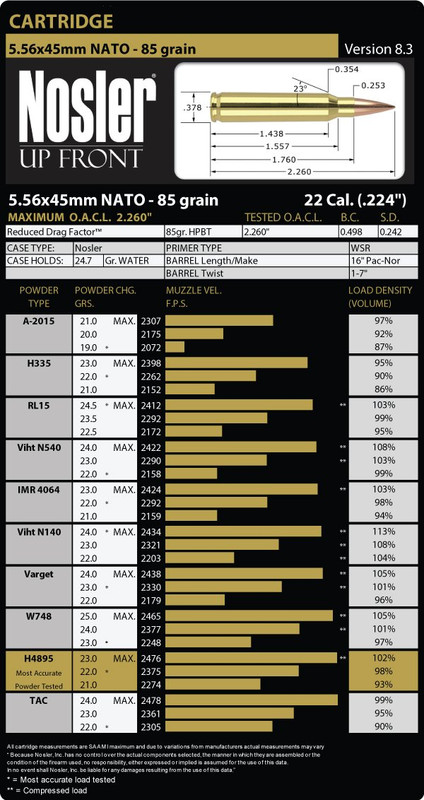I will. I have something going on with my brass. I bought once fired LC brass ready to load. However, when seating the bullet the projectile "skins" into the case mouth and causes a BULGE right at the case mouth. I measured this bulge at .257 which is jamming in the chamber. Like your picture above from NOSLER shows that dimension should be .253 ALSO, I am getting a forcing donut on the bullet from the seater die. It is taking a considerable amount of force to cam over the Co-AX press.
The below photos show the issues I am having. FYI, I am using a Forster CO-AX Press, Forster Micrometer seating die.
I loaded 20 rounds with 24.o grains of varget and shot 5 of them. The other 15 would NOT chamber. I got the following numbers:
RELOADS 85gr Nosler RDF, 24.0 Varget, FGMM205
2712 AVG: 2717
2713
2716 BC: G1 .498
2722 G7 .245
2723
This is in a Bolt gun, 24" 1:7 twist, .223 Wylde Chamber. MDT polymer mags internal length is 2.550"
Since I had the failure to chamber issue I reached out to a friend who is a TOP TIER gunsmith, HE HAD NOTHING to do with this rifle, and he told me to STOP and get the brass situation sorted out. It is so nice having good people that will share their hard earned knowledge.
I ordered some VIRGIN brass to try and see if it my brass. If it is, it's not that big of a financial loss. I also ordered the correct case guide and trimmer for my Giraud.
IF anyone sees anything that I may try or I am doing wrong. I am listening. NO EGO here. My reloading experience is NOT that great. I do build my own .308 load that I tailored to mirror Factory Hornady 168 AMAX TAP. I can shoot one of each and they go in the same place.


